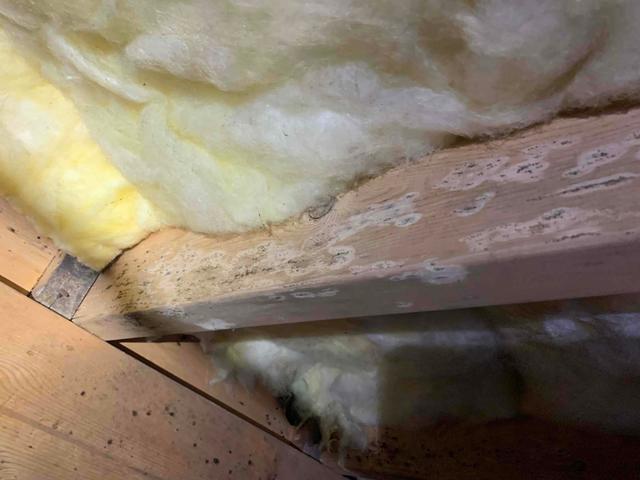
Humidity and Mold Growth
Mold and mildew have grown on many of the wooden floor joists within this crawl space. This can occur on any organic material when the relative humidity of the crawl spaces reaches over 60% during warmer temperatures. The mold spores can then rise into the floors above and irritate those with allergies and asthma.

Control Over Humidity
The homeowner did not choose to have the mold and mildew remediated, but did agree to us installing an energy-efficient dehumidifier in the crawl space. This dehumidifier will help to control and regulate the relative humidity and temperature of the crawl space and will circulate dry air around the area. The mold growth will become dormant when the conditions are unfavorable, but we would still propose remediation.

Exposed Dirt Flooring
The dirt flooring of this crawl space remained exposed, allowing the earth's moisture to rise into the crawl space and raise the relative humidity of the crawl space. High relative humidity can lead to condensation, mold growth, and moisture damage to crawl space materials. The torn remains of the previous liner and other debris also littered these floors, making it difficult for servicepersons to navigate through the crawl space.

CleanSpace Light Vapor Barrier
A 10-mil vapor barrier, called CleanSpace Light, was installed over the dirt floor of this crawl space. This durable liner covers the entire crawl space floor, is wrapped around all piers, sealed with vinyl tape, and mechanically fastened to the foundation walls six to eight inches above the outside grade. This vapor barrier will help to protect the crawl space from any moisture rising out of the earth.

Porous Foundation Walls
The foundation walls of this crawl space were made with porous cinderblocks, which were allowing the outside moisture to seep through and raise the relative humidity. Open vents also lined these walls, which was allowing the outside air and moisture to flow into the crawl space. This will also lead to mold and mildew growth, higher relative humidity, and higher energy bills.

SilverGlo Foamboard Walls
We mechanically fastened and sealed a two-inch foamboard, called SilverGlo, over the foundation walls of the crawl space. At this thickness, the SilverGlo will act as an air barrier and vapor retarder, giving protection to the crawl space from any outside influence. All open vents are internally blocked and sealed with foamboard pieces and can foam before the SilverGlo is installed, maximizing protection.


